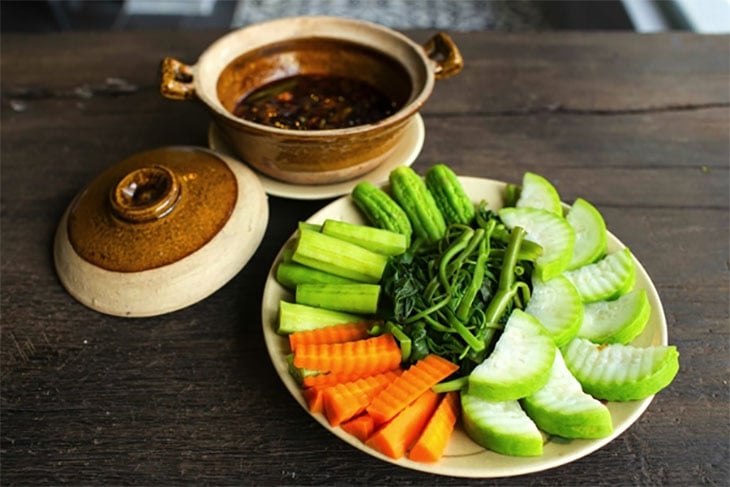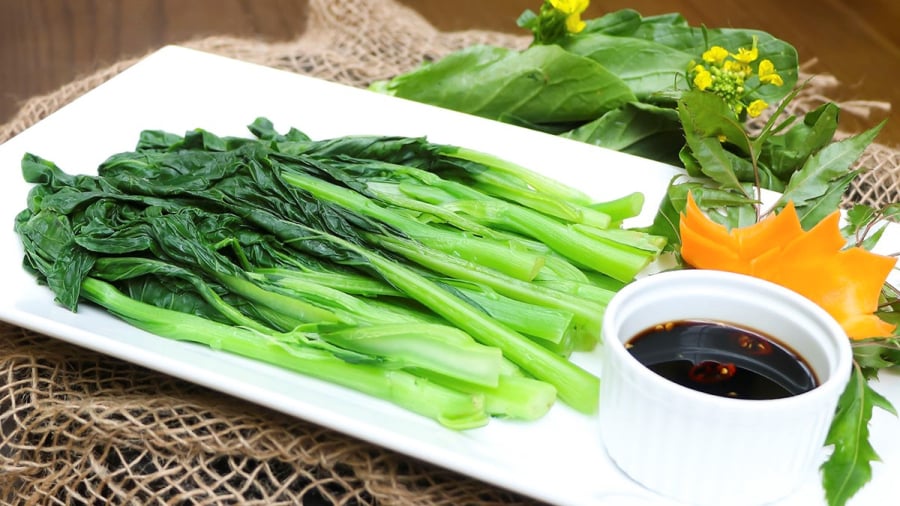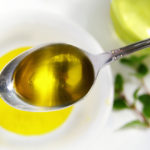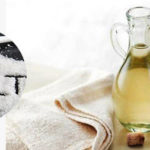Add a pinch of salt to the boiling water for vegetables
When boiling vegetables, if you want them to be vibrant and flavorful, add a few grains of salt to the water before putting the vegetables in. This will enhance the taste of the boiled vegetables and make them much more delicious.
Note: When adding salt to the boiling water, be careful not to add too much as it will turn your dish into a soup, which will not be as tasty.

Delicious and vibrant boiled vegetables
Use boiling water to prevent discoloration
A common mistake many homemakers make is adding vegetables to the boiling water before it comes to a full boil, which causes the vegetables to become discolored. Therefore, to make your vegetables taste better, be patient and wait for the water to come to a full boil before adding the vegetables. This is because many vitamins and nutrients are lost as soon as the vegetables are added to the water. So, by adding the vegetables to boiling water, you prevent them from soaking in the water for too long, which can lead to a loss of nutrients and the evaporation of the vitamins in the vegetables.
Add a few drops of cooking oil to the boiling water for vegetables
One of the secrets to making your vegetables look fresh, delicious, and enticing is to add a few drops of cooking oil while boiling them. Cooking oil helps to retain the natural heat of the vegetables and enhances their tenderness when consumed. In addition, this layer of oil will help to keep the boiled vegetables hot for longer periods of time without changing their color. However, the boiling water will have an oily film, which can be used or omitted depending on your family’s taste preferences.

How to boil vegetables to preserve their nutrients
Soak the vegetables in ice water after boiling
If you want your vegetables to retain their nutrients and have a crispy texture, after boiling them, scoop them out and put them in a bowl of water with a few ice cubes. The reason for this is that when the vegetables are still hot, a sudden change in temperature not only makes the vegetables turn a beautiful green color, but also helps to preserve the vitamins present in the vegetables. Furthermore, the ice water can help keep the vegetables crisp and delicious when eaten.
Boil vegetables with high heat for better taste
Tips on Selecting Healthy Cooking Oil and Safe Ways to Cook with It
A Taiwanese company has made a significant impact on the food industry through the recycling of over 700 tons of dirty oil, which has been exported to over 12 countries, including Vietnam. This has raised a few eyebrows among housewives, as cooking oil is an essential condiment in daily cooking. To ensure the safety and quality of their cooking oil, consumers should take note of the following advice.





































![How to Change Garena Avatar on Phone and PC [Latest Guide]](https://meo.tips/wp-content/uploads/2024/04/123-100x70.webp)
